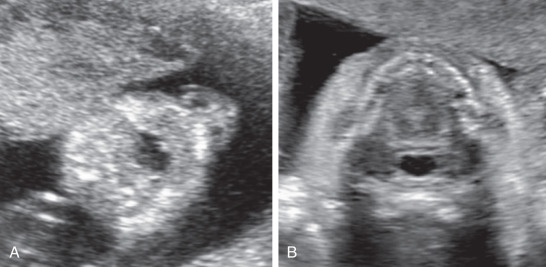Abstract
Orofacial clefts (CLPs) are the most common craniofacial anomaly. CLPs can be classified according to their location as unilateral, bilateral, or medial. The location of the defect is important in terms of evaluating the risk of associated anomalies and postnatal outcome. Medial defects accounts for less than 1% of all CLPs, and are generally associated with other brain and facial midline anomalies, and the risk of chromosomal anomalies is very high. Unilateral and bilateral CLPs also present a high risk of associated anomalies (30%–45% of cases) and genetic syndromes (5%–7% of cases) in fetal life. Amniocentesis should be considered in all cases in addition to careful assessment for additional structural abnormalities. Obstetric management should not be changed in the presence of this anomaly, but referral of patients to a comprehensive management team is recommended. Overall prognosis is good for isolated forms. Risk of recurrence depends on the form of the defect, the presence of a genetic syndrome, and the existence of other cases in the family.
Keywords
orofacial clefts, cleft lip, cleft palate, medial defect, lateral defect
Introduction
Orofacial clefts, which include cleft lip (CL), cleft lip and palate (CLP), and cleft palate alone (CP), include a range of disorders affecting the lips and oral cavity, and represent the most common craniofacial malformation identified in the newborn. They can occur as a part of a syndrome involving multiple organs or as isolated malformations.
Disorder
Definition
Orofacial clefts represent all those defects involving the upper lip, with or without extension to the alveolar ridge or primary palate, and to the hard or secondary palate. Defects can also be classified according to their location in unilateral, bilateral, or medial. The particular location of the defect is important in terms of evaluating the risk of associated anomalies and postnatal outcome.
Prevalence and Epidemiology
Orofacial clefts arise in about 1 : 700 to 1 : 1000 live births, with ethnic and geographic differences; the prevalence is lowest in African Americans, intermediate in Caucasians, and highest in Native Americans and Asians. The prevalence varies for the type of orofacial cleft: 3.4 : 10,000 to 22.9 : 10,000 births for CL and CLP and 1.3 : 10,000 to 25.3 : 10,000 births for isolated CP. CL and CLP are listed as a feature in more than 200 and 400 genetic syndromes, respectively. Approximately 15% to 45% are associated with other anomalies, genetic syndromes, and chromosomal abnormalities.
Etiology, Pathophysiology, and Embryology
The etiology of orofacial clefts is multifactorial. Epidemiologic and experimental data suggest an influence of environmental risk factors such as maternal exposure to tobacco smoke, alcohol, poor nutrition, viral infection, medicinal drugs, and teratogens in early pregnancy. This is in line with the finding that planned pregnancies have lower risks of these defects.
Because the lip and primary palate have distinct development origins from the secondary palate, orofacial clefts can be subdivided into different types ( Figs. 65.1–65.5 ):
- 1.
Cleft lip without cleft palate (CL): 25% of orofacial clefts. Only the lip is laterally affected and the defect can be unilateral or bilateral.
- 2.
Cleft lip with cleft palate (CLP): 50% of cases. The lip and the primary palate are involved. This is a lateral defect that can be unilateral or bilateral.
- 3.
Isolated cleft palate (CP): 25% of orofacial clefts. Only the secondary palate is affected. This form is very seldom diagnosed prenatally.
- 4.
Median cleft lip and palate (MCLP): less than 1% of all orofacial clefts. It is distinguished etiologically from lateral CL and/or CLP, since it could be considered a midline defect. It is more often associated with other brain and facial midline anomalies, and the risk of chromosomal anomalies is very high.
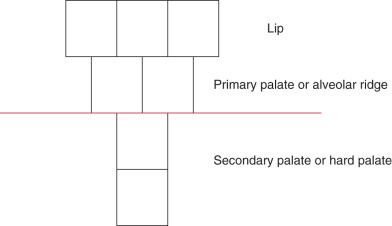
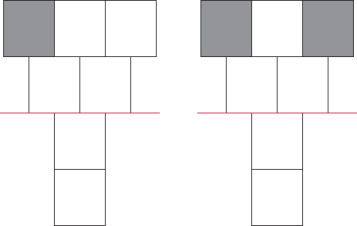
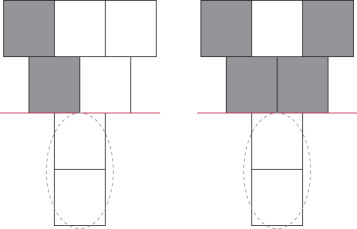
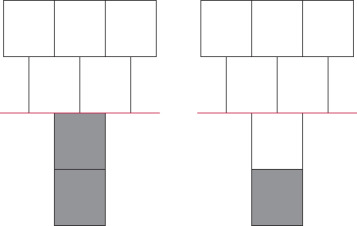
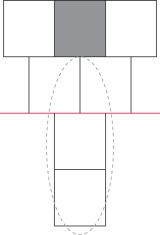
Manifestations of Disease
Clinical Presentation
Unilateral forms are more common than the bilateral forms (75% and 25%, respectively). The palate is affected in 75% of unilateral and 90% of bilateral cases.
As previously mentioned, approximately 15% to 45% of orofacial clefts in the fetus are associated with other anomalies. The risk of chromosomal abnormalities is higher in bilateral forms of CLP, in isolated CP, and in those cases associated with other anomalies. Around 2% to 7% of the orofacial clefts can be associated with a genetic syndrome.
The prognosis of orofacial clefts depends on its extension (involvement of palate) and its association with other anomalies. The effects of orofacial clefts on speech, hearing, appearance, and psychology can lead to long-lasting adverse outcomes for health and social integration. Typically, affected children need multidisciplinary care from birth to adulthood, and have increased rates of morbidity throughout life.
Imaging Technique and Findings
Ultrasound.
CL and CLP can be diagnosed when the soft tissues of the fetal face are visualized sonographically, at 13–14 weeks by transabdominal ultrasound (US) and somewhat earlier by transvaginal US. The diagnosis can be made using different views of the lower part of the face ( Fig. 65.6 ), showing the interruption or discontinuity at the lip and/or palate. The oblique view of the mouth is essential for the diagnosis and to determine whether the defect is unilateral or bilateral. The axial view at the level of the upper maxilla will help determine the integrity or involvement of the anterior palate ( Figs. 65.7 and 65.8 ). If CL is not associated with a palate defect, the alveolar ridge will be intact and the maxilla unremarkable. If, on the contrary, the cleft involves the bony structures, an abnormal communication between the oral and nasal cavities can be seen. It should be noted that the midline sagittal view appears normal in unilateral CL and CLP, since the defect lies in another plane. Bilateral CLP presents a characteristic appearance, with midline protuberance of soft tissue hanging from the philtrum ( Fig. 65.9 ).

